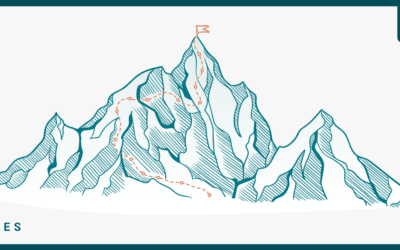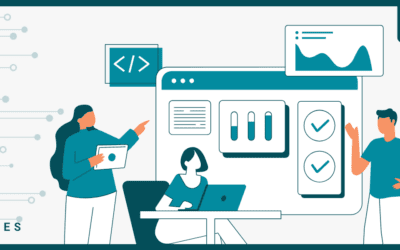The podcast How I Built This with Guy Raz is an excellent listen for entrepreneurs, investors, and anyone interested in the startup culture. For those crucial inventors and future founders, it offers insights into what to expect and what it may take, and helps to manage expectations for taking an idea from creation to customers.
For those not on the founder side, it helps expose the weaknesses in the status quo, where the incubator, accelerator, and investment pipeline have significant deficiencies. Those interested in startup culture who have never experienced it firsthand see the success stories but often miss the trials and tribulations required by founders to get to solvency.
The movie The Social Network made it all look relatively simple: Zuckerberg builds an idea, and there always seems to be money to hire people or get space for a fledgling Facebook. Likewise, the hero stories of Bill Gates and Microsoft (dropped out of Harvard and realized his dream, like Zuck), Sergey Brin and Larry Page building Google in a garage, Bezos leaving his bond trading job and starting Amazon with a $100k loan from his parents (also built in his garage), and of course Steve Jobs and Steve Wozniak building Apple in – you guessed it – a Silicon Valley garage with help from their computer club.
But if you step away from Hollywood’s depiction and listen to the tales told on How I Built This, a very different yet strikingly similar story seems to emerge in nearly every interview. They had a great idea, but nobody wanted to fund it until we had many customers.
“Once we started making money, VCs and investors started gatecrashing our offices (or homes) and demanding that we allow them to throw money at us.”
-Most interviews on How I Built This
One of the best versions of this story is from Airbnb co-founder Joe Gebbia. The casual observer sees their current market capitalization and thinks the founders rode on easy street and struck it rich. Still, they likely don’t know how they had to invent Obama Os (a generic cereal rebranded) and sell them during the DNC convention to keep the lights on at one point.
The cold, hard reality is that Venture Capital (VC) firms strike out more than they succeed, with an average of 10% of their investments panning out and driving their business models. A production-based business model would cause the company to increase production to find economies of scale. Still, in the VC (and angel investor) world, it causes investors to wait until a business model has already proven itself to get in.
How many potentially world-changing ideas have died on the vine because they couldn’t raise the capital to bring their ideas to the world due to a gunshy investor class? Additionally, in many cases, the startup investing world has become one in which connections and networking drive the ability to raise capital instead of the best ideas rising to the top.
Why Accelerators Need Pre-MVP Programs
The very purpose of an accelerator is to find the best founders and ideas, help them develop and nurture those ideas, and bring them to the world in a way that will gain the most traction (if done correctly). While most wait on the sidelines until an MVP has been created and customers have already been found, we would like to take the time to help you understand the 5 reasons accelerators need pre-MVP programs for idea-stage founders:
- Pre-MVP is a Crucial Stage That Can Affect the Entire Ideation
- Differentiate Your Program in a Crowded Market
- It’s the Best Opportunity to Get in on Great Ideas Early
- It’s Your Real Chance to Make a Difference
- Money is Being Left on the Table
Let’s dive in.
1. Pre-MVP is a Crucial Stage That Can Affect the Entire Ideation
A major issue with founders that they fail when they go to market is that they became tied to a belief or idea in the early stages based on faulty (or no) market research. Most incubators and accelerators focus on the product itself without enough due diligence into the reality of the Total Addressable Market (TAM) that the founders originally pitched them with.
Working with founders in the Pre-MVP stage with an idea that can truly gain traction (if it has the correct product-market fit) allows accelerators to find untapped potential and point it in the correct direction. Like a spaceship with an incorrectly plotted trajectory, that potential energy within the startup needs the best minds and most dedicated work behind it to reach the accurate end destination.
Once founders start putting their effort (and potentially finances) behind a pre-determined trajectory, it is extremely difficult to correct course. A good founder needs to be able to listen objectively to opinions but also know that most people will not see their vision. This causes them to often write off constructive criticism as naysayers because “they just don’t see it.”
However, an accelerator with the opportunity and expertise to point them in the right direction before sweat and treasure is tied to a specific course opens them up to a world of possibilities.
2. Differentiate Your Program in a Crowded Market
When the pandemic and lockdowns moved the world to remote work, it changed much of our society. One of the biggest pre-pandemic downsides of the famed Y-Combinator was that it required founding teams to move to San Francisco during their accelerator but only afforded them $120k in a city with some of the most expensive housing costs in the nation.
With many accelerators going remote, geography and living costs are no longer an impediment for startups to participate, making the competition among quality accelerators and incubators fierce. By opening up your accelerator to pre-MVP startups, you can differentiate yourself from others requiring additional maturity. This could vastly increase your chance of landing the next founder poised to change the world if only they could find the right team to get them there.
3. It’s the Best Opportunity to Get in on Great Ideas Early
“Fortune favors the bold.”
-Virgil
The startup world is one built on risk-taking, yet risk-minimization procedures seem to hamstring the industry as a whole. An accelerator’s reputation is built upon its students’ success, yet many don’t want to accept startups until they’ve proven themselves in some capacity.
While this is understandable in a game where the statistical odds are very much against us, it also opens up an opportunity for accelerators with a keen eye on recognizing talent, ideas, and vision. A willingness to take pre-MVP stage founders opens the accelerator’s funnel wider than its competitors. If the program is properly structured, it provides a greater chance of graduating (and potentially investing in) the next Facebook, Google, Amazon, Uber, or Airbnb.
Or, you could continue with the same business model you’ve been using but expect different results. There’s a name for that (hint: insanity).
4. It’s Your Real Chance to Make a Difference
There’s a tale as old as time that is oft-told in best-selling, evergreen books and Hollywood box office hits alike. The main character sets out to save or change the world. They are beset by trials and tribulations until the Wise Sage comes along to guide their way to success (or survival). The coach in Rudy, Obi-Wan in Star Wars, Gandalf in Lord of the Rings, and Haymitch in The Hunger Games.
The Wise Sage doesn’t wait until the hero is already fighting the evil antagonist to appear – they show up and provide training before that great battle to prepare them accordingly. It’s not an overreach to call a good accelerator the Wise Sage in the startup founder’s hero story. After all, they chose this mission, and your job is to adequately train them for the trials and tribulations.
Some in the startup ecosystem entered for purely financial reasons, but many of us are attracted to the idea that we will one day discover and assist the founder who will truly change the world. Unfortunately, many founders understand that deeply-held desire, and as parodied in HBO’s Silicon Valley, some take a very liberal interpretation of how their company will do so.
Still, we can all hold on to that dream that we will one day find the founder on the path to curing cancer, solving world hunger, or doing away with poverty. However, unless someone is willing and able to be the Wise Sage for that founder when he or she comes along, that world-changing panacea runs the risk of never making it to the public.
5. Money is Being Left on the Table
Altruistic hopes and dreams aside, from a purely financial and business model point of view, there is potentially an enormous amount of money being left on the table by not coaching and helping Pre-MVP founders. What would have happened if Zuck hadn’t met Peter Thiel, Bezos’ parents hadn’t been able to provide him with his loan, or the Obama Os used to keep Airbnb going hadn’t sold a single box?
Whether your accelerator takes money, equity, or recognition from graduated startups, an enormous opportunity cost can be associated with letting “the next big thing” slip through your fingers – or, in this case, go by completely unnoticed.
Living in the startup world, we view the world through our own personal (and business) lenses. We spend our days around the professionals who make this machine run and expect founders to come to us with that same level of knowledge.
How realistic is that?
Think about the world-changing examples that we listed above. Would a founder who has found the secret to curing cancer have a life experience filled with knowledge about running a business and raising capital? Or is it more likely they’ve spent their entire life learning and working within the medical or research world?
If the ideas with the greatest potential came from successful, veteran startup founders, they wouldn’t have any need to join an accelerator in the first place. The entire point of incubators and accelerators is to be the Wise Sage for startup newbies who have an idea, passion, and willingness to turn their idea into reality – but they come to us because we have the knowledge and experience to assist them.
If your business model depends on being able to see vision and opportunity before anyone else, why would you wait rather than capitalize on that vision as early as possible?
Conclusion
The most damaging thought process in any company is that we do something a certain way purely because it’s the way we’ve always done it. In an industry that prides itself on innovation, it is amazing how many within it stick to the same business model and hope for the opportunity of a lifetime to fall into their laps.
Right now, someone in the world has an idea in their head that will revolutionize how things are done. Statistically speaking, it’s more likely than not that they have neither the experience within our industry (startups) to know how it works nor the time to spend weeks researching the best practices to perfect their pitch to VCs or create a go-to-market plan to find customers.
They are Subject Matter Experts (SMEs) in their respective field, life experiences, or specialties. Yet, we expect them to have a comprehensive understanding of their potentially world-changing idea and every single aspect of the business that needs to be built around it.
That should not be their job – it should be ours. If your accelerator prides itself on spotting vision or a winning team, why wait for an MVP and take the chance of missing out on the next potentially world-changing founder?
If they are willing to put it all on the line to bring their vision to reality, we should be willing to trust our instincts and experience and act as the Wise Sage when it is most needed.



